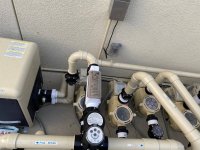Hi,
I am new here and am hoping that someone can share some information regarding an issue I am having. We had a negative edge pool built recently and right next to it is a sunken firepit lounge. The way that it was designed, whenever we use the pool, the water flows right out of the pool into the deck all around the pool and and into the sunken lounge, getting my cushions all wet and making part of the space unusable. My contractor didn't feel like finishing the job (I paid him in full and he just abandoned the project without finishing) and I cannot get him to come back so now I have this issue with the pool.... Someone told me that there is a way to lower the water level in the pool while using it and drain the water into the water tank so that the water won't flow out of the pool - has anyone heard of this?
Thank you so much for any info...
-Helena
I am new here and am hoping that someone can share some information regarding an issue I am having. We had a negative edge pool built recently and right next to it is a sunken firepit lounge. The way that it was designed, whenever we use the pool, the water flows right out of the pool into the deck all around the pool and and into the sunken lounge, getting my cushions all wet and making part of the space unusable. My contractor didn't feel like finishing the job (I paid him in full and he just abandoned the project without finishing) and I cannot get him to come back so now I have this issue with the pool.... Someone told me that there is a way to lower the water level in the pool while using it and drain the water into the water tank so that the water won't flow out of the pool - has anyone heard of this?
Thank you so much for any info...
-Helena


















